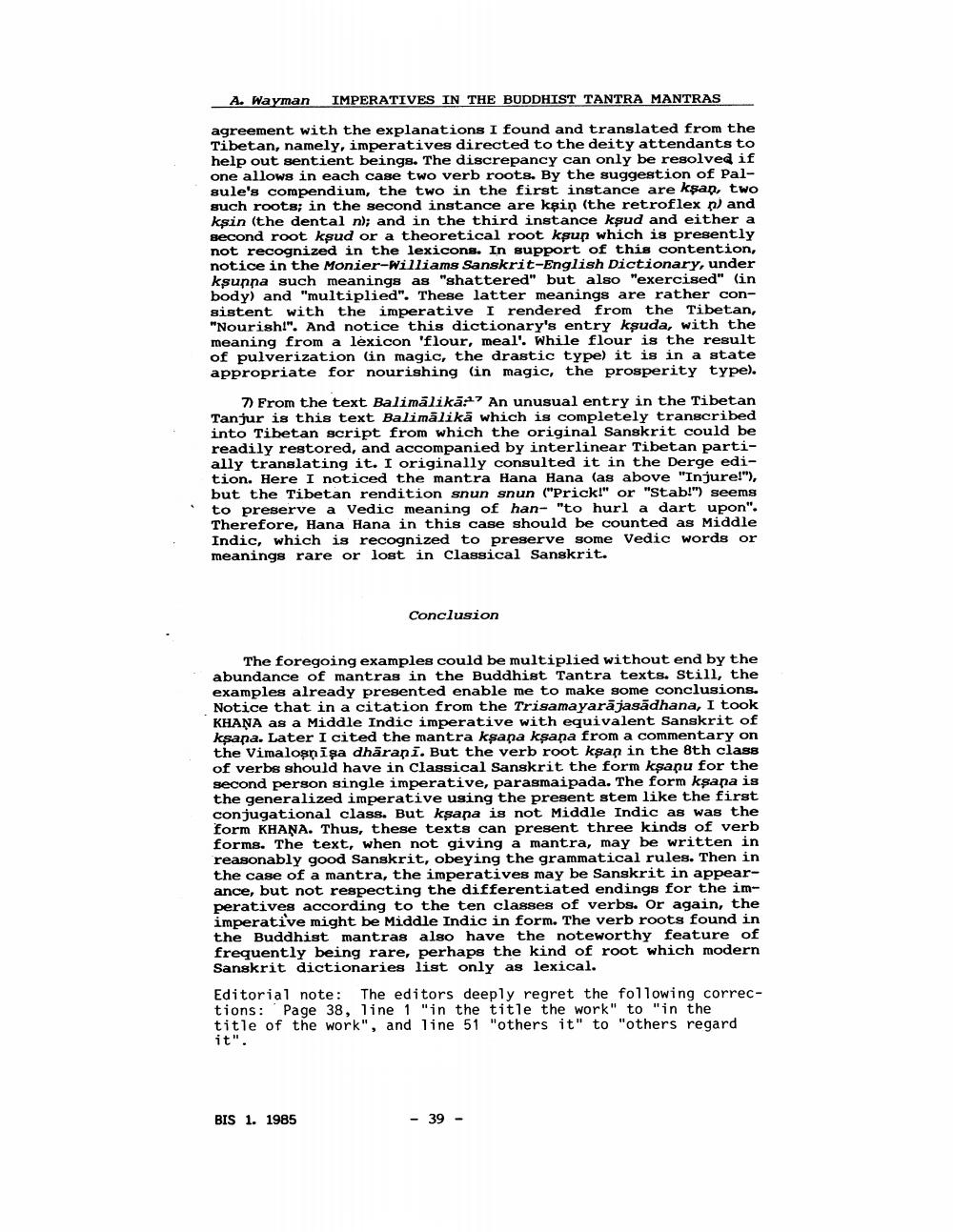Book Title: Imperatives In Buddhist Tantra Mantras Author(s): Alex Wayman Publisher: Alex Wayman View full book textPage 5
________________ A. Wayman IMPERATIVES IN THE BUDDHIST TANTRA MANTRAS agreement with the explanations I found and translated from the Tibetan, namely, imperatives directed to the deity attendants to help out sentient beings. The discrepancy can only be resolved if one allows in each case two verb roots. By the suggestion of Palsule's compendium, the two in the first instance are kşan, two such roots; in the second instance are kşin (the retroflex p) and ksin (the dental n); and in the third instance ksud and either a second root ksud or a theoretical root ksun which is presently not recognized in the lexicons. In support of this contention, notice in the Monier-Williams Sanskrit-English Dictionary, under ksupna such meanings as "shattered" but also "exercised" (in body) and "multiplied". These latter meanings are rather consistent with the imperative I rendered from the Tibetan, "Nourish!". And notice this dictionary's entry kşuda, with the meaning from a lexicon 'flour, meal'. While flour is the result of pulverization in magic, the drastic type) it is in a state appropriate for nourishing (in magic, the prosperity type). 7) From the text Balimālikā:17 An unusual entry in the Tibetan Tanjur is this text Balimalik, which is completely transcribed into Tibetan script from which the original Sanskrit could be readily restored, and accompanied by interlinear Tibetan partially translating it. I originally consulted it in the Derge edition. Here I noticed the mantra Hana Hana (as above "Injure!"), but the Tibetan rendition snun snun ("Prick!" or "Stab!") seems to preserve a Vedic meaning of han- "to hurl a dart upon". Therefore, Hana Hana in this case should be counted as Middle Indic, which is recognized to preserve some Vedic words or meanings rare or lost in classical Sanskrit. Conclusion The foregoing examples could be multiplied without end by the abundance of mantras in the Buddhist Tantra texts. Still, the examples already presented enable me to make some conclusions. Notice that in a citation from the Trisamayarājasādhana, I took KHANA as a Middle Indic imperative with equivalent Sanskrit of ksana. Later I cited the mantra kşana kşana from a commentary on the Vimalosnīşa dharani. But the verb root kşan in the 8th class of verbs should have in Classical Sanskrit the form kşapu for the second person single imperative, parasmaipada. The form ksana is the generalized imperative using the present stem like the first conjugational class. But ksana is not Middle Indic as was the form KHANA. Thus, these texts can present three kinds of verb forms. The text, when not giving a mantra, may be written in reasonably good Sanskrit, obeying the grammatical rules. Then in the case of a mantra, the imperatives may be Sanskrit in appearance, but not respecting the differentiated endings for the imperatives according to the ten classes of verbs. Or again, the imperative might be Middle Indic in form. The verb roots found in the Buddhist mantras also have the noteworthy feature of frequently being rare, perhaps the kind of root which modern Sanskrit dictionaries list only as lexical. Editorial note: The editors deeply regret the following corrections: 'Page 38, line 1 "in the title the work" to "in the title of the work", and line 51 "others it" to "others regard it". BIS 1. 1985 - 39 -Page Navigation
1 ... 3 4 5 6 7
